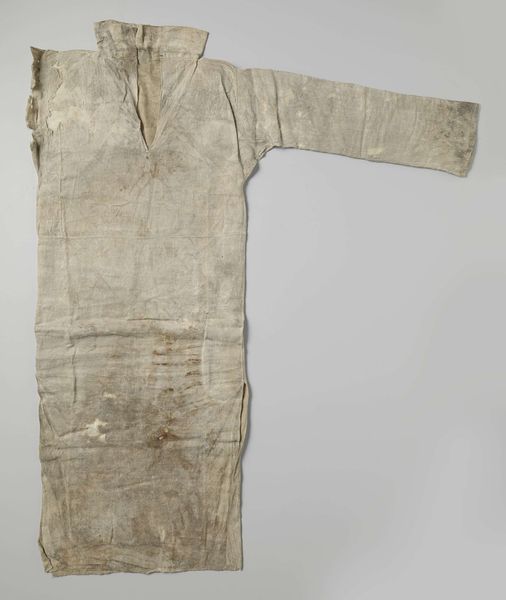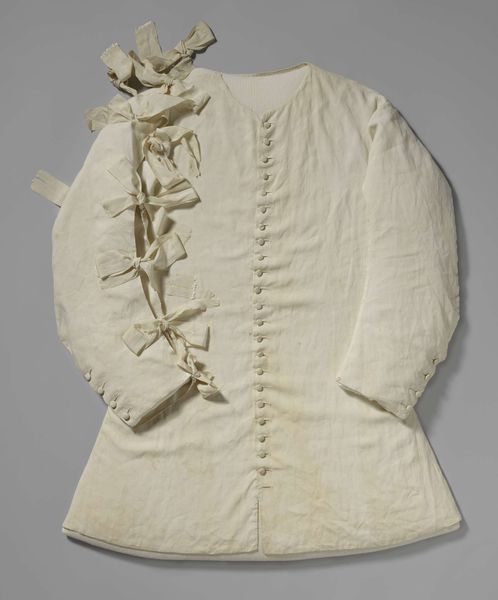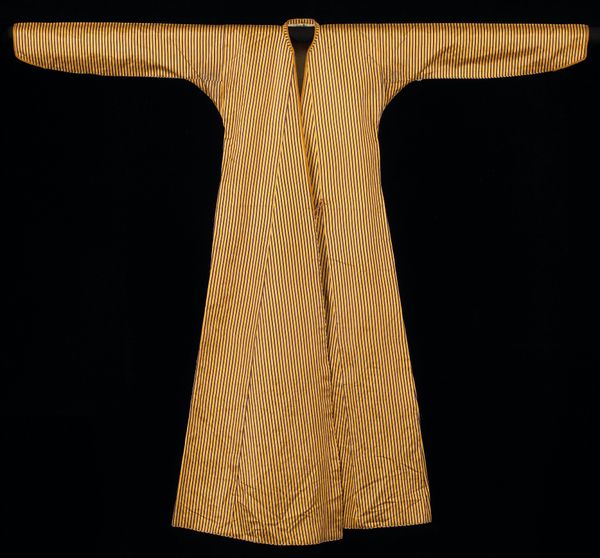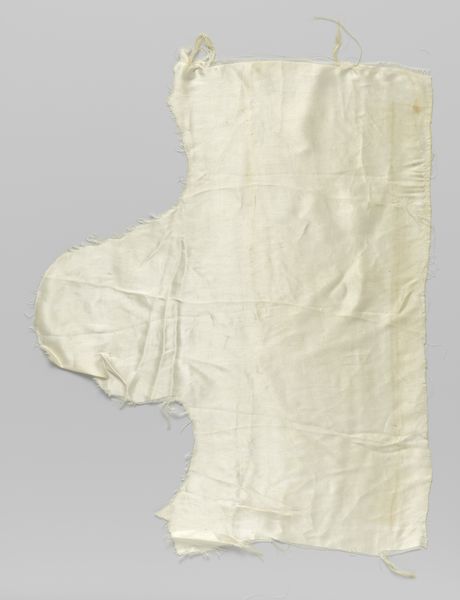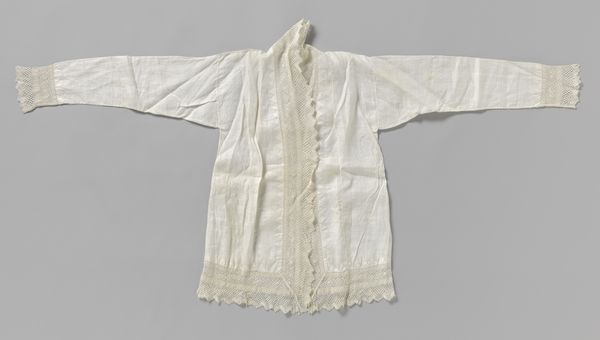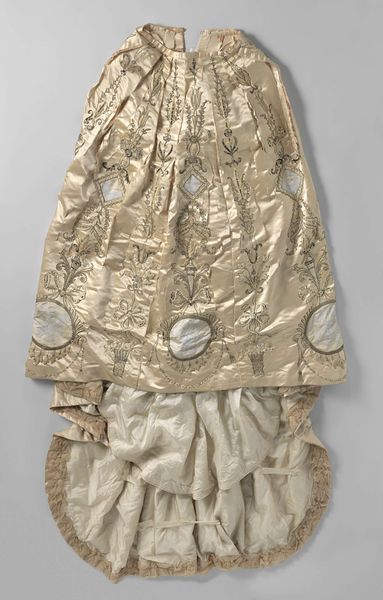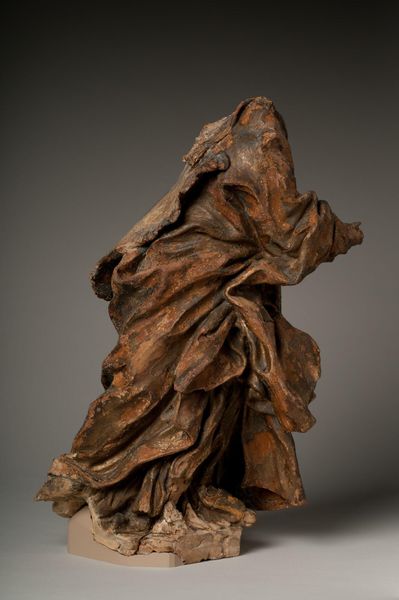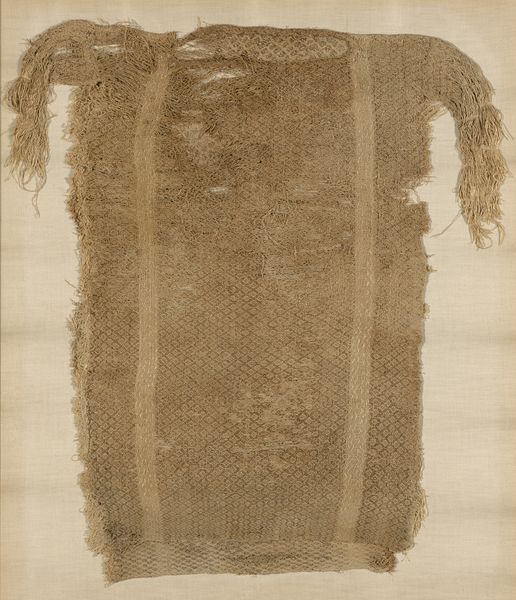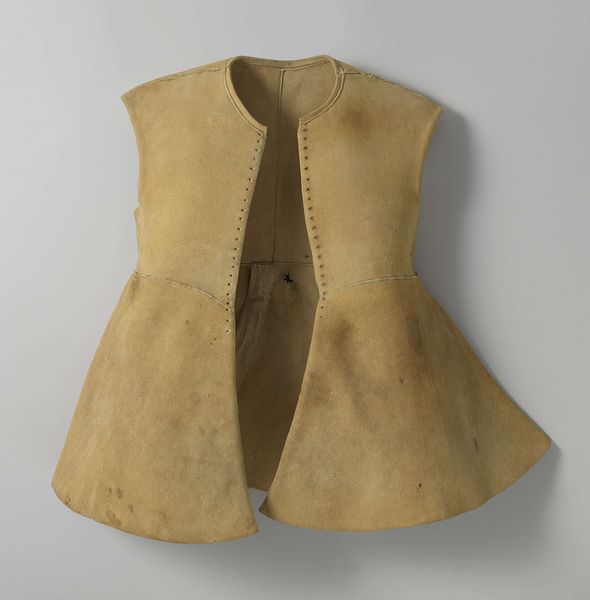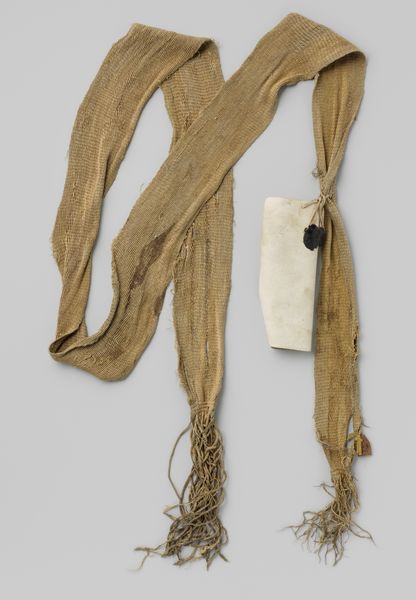
Hemd, mogelijk gedragen door Hendrik Casimir tijdens de bestorming van een fort bij Hulst before 1640
0:00
0:00
anonymous
Rijksmuseum
textile
#
medieval
#
textile
#
history-painting
Copyright: Rijks Museum: Open Domain
Editor: Here we have a linen shirt, believed to have been worn by Hendrik Casimir during the siege of Hulst, before 1640. It's housed in the Rijksmuseum, an anonymous piece of textile. Honestly, it’s unsettling, almost macabre. What makes it so important historically? Curator: Indeed, its unsettling quality is part of its power. We see history directly imprinted upon it, marking it much more than an ordinary piece of clothing. What’s significant here is the relic; a fragment, even, embodying public memory and commemoration. Editor: So, it’s less about artistry and more about the shirt’s place in shaping a certain national narrative? Curator: Precisely! Think about the public role of such an object. A preserved shirt alludes to an event but also speaks to institutional decisions: Who decided this shirt was worthy of display? What power dynamics were in play when someone attributed importance to this item rather than others? It evokes national pride. This stained linen visually manifests a Dutch heroic tale. Editor: The museum legitimizes its importance. Curator: Absolutely. The Rijksmuseum elevates it, thereby crafting collective memory and engaging in socio-political storytelling through preservation. Does seeing the shirt this way impact your initial impression? Editor: Definitely! It gives me a framework to better contextualize the historical moment, going beyond the object's sheer appearance. Thanks! Curator: And understanding its role in public memory gives the artwork more historical context to the people seeing it today.
Comments
No comments
Be the first to comment and join the conversation on the ultimate creative platform.
